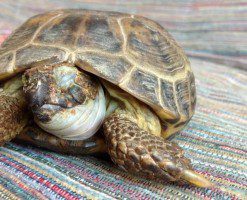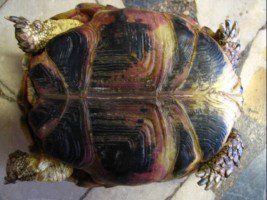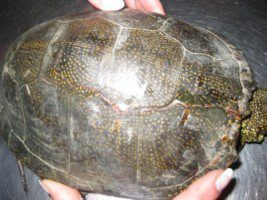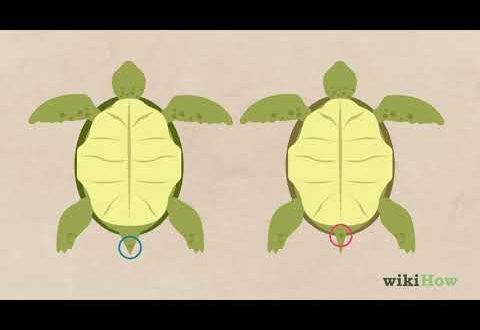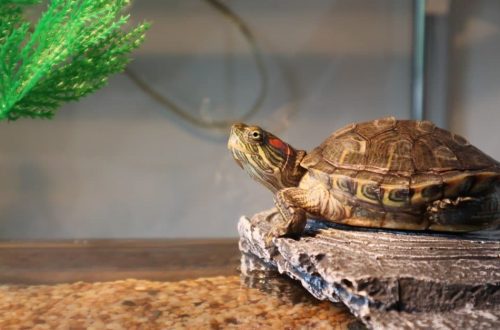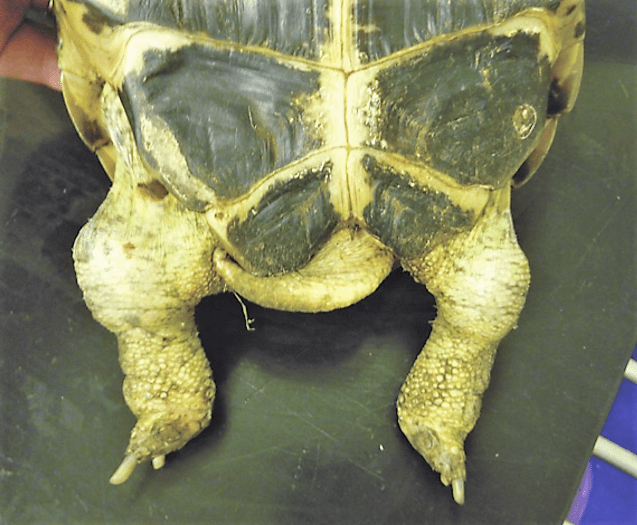
Turtle kidney failure (TR), nephritis
Symptoms: passivity, refusal to eat, blood under the plates on the plastron, no salts in the urine Turtles: more often land Treatment: symptoms are seen in the last stage, when it is too late to treat
The reasons:
Conditions that contribute to kidney failure (increased uric acid levels):
- dehydration (wintering under the battery),
- improper feeding – excess protein (feeding meat, bread, etc.), high protein content in the feed,
- long-term maintenance at low temperatures (on the floor),
- lack of vitamin A or its excess,
- imbalance of calcium / phosphorus (introduction of drugs that are not suitable for the turtle or incorrect calcium supplements),
- the use of nephrotoxic drugs,
- various infections of the urinary tract and cloaca. This disease usually occurs only in terrestrial turtles and very rarely in aquatic ones.
All these unfavorable factors cause destructive changes in the renal epithelium, which leads to impaired renal function – phosphates begin to accumulate in the body, and the calcium level drops, the ratio of calcium to phosphorus changes from 3 to 1, to the opposite.
There are several reasons for nephropathy in reptiles, but specifically in Central Asian turtles, this is most often associated with prolonged dehydration, a lack of vitamin A, prolonged maintenance at low temperatures, an excess of protein in the diet and feeding the following plants: white and cauliflower, spinach, potatoes, legumes (sprouts including) pineapple. It also often occurs after, as we call it, “spontaneous hibernation” (disorganized, uncontrolled hibernation – in other words, behind the refrigerator or under the radiator): uric acid continues to form, but is not excreted, which leads to kidney failure (insoluble urine blocks the renal tubules).
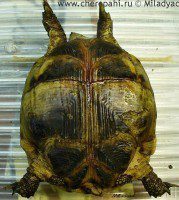
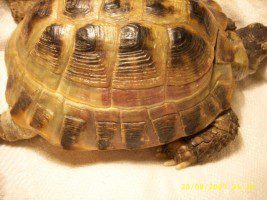
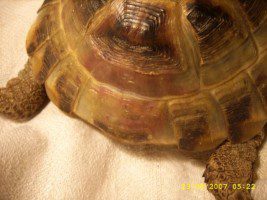
Syndrome
Acute renal failure (ARF) and chronic renal failure (CRF). The doctor at the appointment usually makes a presumptive diagnosis: acute or chronic kidney disease (not defined more closely). As the diagnosis is made, the final diagnosis is already made. The differences are in the course of the disease, external signs, test results and treatment tactics.
If the Central Asian tortoise has an acute process, then it will most likely be dehydrated, it will not have an appetite, but it may be thirsty; it may pass urine, but it will not contain uric acid salts (“white paste”). The shell will not necessarily be softened. In a chronic process, there will also be a lack of appetite, most likely a complete absence of urination, and dehydration may be replaced by swelling. The shell of a turtle in a chronic process will most likely be soft (the predominance of processes of pronounced disturbance in mineral metabolism will cause the disease to manifest itself in the form of a problem, which is called “rickets” in the common people). The hind limbs, with preserved sensitivity, almost do not move, and due to weakness, swelling and processes of “erosion” of the bone tissue, it may outwardly seem that they do not have bones at all (the bones have not gone anywhere, they are in place). At the terminal stage (final – the “point of no return”), hemorrhages occur under the plastron shields (see photo), and the shields themselves can be easily removed (literally). Regarding the smell: this is subjective, but your humble servant believes that a person who worked with a terminal kidney gland must have smelled a characteristic smell from such animals and will never confuse it with any other.
Symptoms:
The main problem in the treatment of nephropathy is that the owners notice that the pet fell ill too late – at the terminal stage, when the reptile is already in the so-called uremic coma – lack of response to external stimuli, reduced muscle tone, extensive hemorrhages on the plastron and carapace, obvious a picture of severe dehydration, sunken eyes, anemic mucous membranes, urinary retention due to complete atony of the bladder. In this case, treatment is inappropriate. It is very difficult to diagnose nephropathy before the appearance of clinical signs of PN in reptiles (due to slow metabolism), therefore, in practice, doctors already encounter signs of obvious PN, and often already with the terminal stage.
With a prolonged violation of kidney function, the level of phosphates in them begins to increase and the level of calcium decreases, a clinical picture of “rickets” occurs.
- turtles are overweight or normal weight and usually refuse food;
- vomiting may occur – a rather rare symptom in turtles;
- the turtle has very odorous feces and urine;
- the hind limbs swell, possibly the front ones. The skin becomes almost transparent;
- under the shields of the plastron, a fluctuation of the liquid is noticeable (usually without blood admixture);
- possible symptoms of hypovitaminosis A;
- possible symptoms of osteomalacia;
- the neck may swell in land turtles;
- there are no salts in the urine.
The turtle stops eating, barely crawls, does not open its eyes well, can periodically open and close its mouth. In renal failure associated with nephrocalcinosis (plasma calcium levels as high as 20 to 40 mg/dl), additional injections of calcium salts will cause death of the turtle. In the final stage of renal failure, all processes progress rapidly. Growing anemia, hemorrhagic syndrome, osteomalacia processes lead to the separation of the bone plates along the seams and the falling off of the horny plates. The causes of death are usually pulmonary edema, pericarditis, or encephalopathy. The turtle in the final stage is able to live 5-10 days.
Diagnostics
For a deeper understanding of the process and outlining possible prospects, a number of studies need to be carried out: a blood test (general and biochemical: uric acid, calcium, phosphorus, potassium, sodium, total protein), ultrasound and radiography (you can see an increase in the kidneys and mineral deposits in them; but not always). The most expensive and probably clarifying the situation method: a biopsy. For a number of reasons, it is rarely used.
A biochemical blood test will confirm the presence of the disease. To check the presence of this disease in a turtle, you need to take blood from the tail vein, and do a biochemical study on 5 parameters: calcium, phosphorus, uric acid, urea, total protein
In the absence of treatment, animals die from uremic coma.
Index | Normal value | Pathology (example) |
urea | 0-1 | 100 |
calcium | 4 | 1 |
phosphorus | 1,5 | 5 |
Uric acid | 0-10 | 16 |
Biochemical control of blood in animals with established renal insufficiency should be carried out at the initial stage of therapy every 7-14 days, after stabilization of the condition every 2-6 months to monitor the state of the kidneys and adjust therapy. PN manifests itself when 70% of nephrons die, that is, only 30% of normally functioning renal tissue remains. This means that it is impossible to completely cure the disease, and such animals need lifelong monitoring and therapy.
ATTENTION: The treatment regimens on the site can be obsolete! A turtle can have several diseases at once, and many diseases are difficult to diagnose without tests and examination by a veterinarian, therefore, before starting self-treatment, contact a veterinary clinic with a trusted herpetologist veterinarian, or our veterinary consultant on the forum.
Treatment:
“Therapy for acute and chronic processes will be different; it is quite complex, multi-stage and requires systematic monitoring through analyzes – this makes it necessary to transfer the situation into the hands of a veterinarian. Usually, infusion therapy, corticosteroids, replenishment of vitamins and calcium, furosemide in a chronic process are prescribed, in the presence of direct indications, blood transfusion can be prescribed. Antigout medications are also prescribed. Antibiotics are prescribed, but not always. The same applies to Solcoseryl with Dicinon: we successfully carry out therapy without these two drugs. In the event that renal failure has reached the terminal stage, or there is no positive dynamics in response to therapy within 1,5-2 weeks, the turtle becomes a direct candidate for euthanasia (euthanasia).» Kutorov S.
Treatment is complex and should be carried out by a herpetologist veterinarian. In a chronic process, when there is blood under the plastron or even the carapace (osteorenal syndrome), the prognosis is unfavorable and the most humane is euthanasia. In other cases, it is necessary to restore the functionality of the kidneys.
If the turtle does not empty its bladder for a long time, it is necessary to bathe it daily at a temperature of 27-30 C for 40-60 minutes. The turtle must be forced to move and not fed. If this does not help to remove salts from the bladder, then it is imperative to drain the urine from the bladder by inserting a little finger or a silicone catheter into its neck. Bladder catheterization should be carried out 1 time in 2-3 days until the tone of the smooth muscles of its walls is fully restored. Excess fluid in the bladder will lead to shortness of breath and possibly heart failure. In addition, it is necessary to get rid of salts in the bladder (white curd mass).
Treatment regimen for PN (renal failure):
- Ringer-Locke or Hartman’s solution is injected under the skin of the thigh, every other day, 20 ml / kg, adding 1 ml / kg of 5% Ascorbic acid to the syringe. 5-6 times times. Either Ringer’s solution or Sodium Chloride solution 0,9% together with 5% Glucose in a ratio of 1 to 1 under the skin of the thigh, every other day, 20 ml / kg, adding 1 ml / kg of 5% Ascorbic acid to the syringe. 5-6 times times. Either (if you need a diuretic) Ringer’s solution with 5% Glucose in a ratio of 1 to 1 or Ringer-Locke’s solution (10-15 ml / kg) + 0,4 ml / kg Furosimide. Under the skin of the thigh, every other day. 4 times.
- Vitamin complex Eleovit with a lack of vitamins at a dosage of 0,4 ml / kg once every 2 weeks. Only 2 times.
- Calcium borogluconate is injected under the skin of the thigh, every other day (on other days with point 1), 0,5 ml / kg or Calcium gluconate 1 ml / kg with a lack of calcium. 5 injections.
- [For inflammation of extremities] Dexafort (0,6 ml/kg) in any muscle OR instead Dexamethasone 0,4 ml/kg 3-4 days, then decrease by 2 ml/kg every 0,1 days. Course 8 days.
- [Possible appointment] Antibiotic Baytril 2,5% every other day with a course of 7-10 injections intramuscularly. The antibiotic must not be nephrotoxic.
- [Possible appointment] Dicinon daily intramuscularly 5-7 injections as a hemostatic drug.
- Bathe daily for 40-60 minutes in water + 27-30 C
Treatment regimen for acute renal failure (acute renal failure):
- Ringer-Locke or Hartman’s solution is injected under the skin of the thigh, every other day, 20 ml / kg, adding 1 ml / kg of 5% ascorbic acid to the syringe. 5-6 times.
- Dexafort (0,8 ml/kg) to any muscle group. Repeat after 2 weeks. OR instead Dexamethasone 0,4 ml/kg for 3-4 days, then decrease by 2 ml/kg every 0,1 days. Course 8 days.
- Calcium borogluconate is injected under the skin of the thigh, every other day (on other days with point 1), 0,5 ml / kg or Calcium gluconate 1 ml / kg, 5 injections in total.
- Allopurinol by mouth with 1 ml of water deep into the esophagus, daily, 25 mg/kg, 2-3 weeks (can not be used without diagnostics and blood tests)
- Dicynon 0,2 ml/kg daily, 5-7 days, in the shoulder (in the presence of bleeding)
- Catosal is injected 3 times, 1 ml/kg in the buttock, every 4 days.
- Bathe daily for 40-60 minutes in water + 27-30 C
For treatment you need to buy:
- Ringer-Locke solution (veterinary pharmacy) or Hartmann or Ringer + Glucose | 1 vial | human pharmacy
- Dexafort or Dexamethasone | human pharmacy
- Ascorbic acid | 1 pack of ampoules | human pharmacy
- Allopurinol | 1 pack | human pharmacy
- Dicynon | 1 pack of ampoules | human pharmacy
- Calcium borogluconate | 1 vial | veterinary pharmacy
- Catosal | 1 vial | veterinary pharmacy
- Syringes 1 ml, 2 ml, 10 ml | human pharmacy
It is possible to use Hepatovet (veterinary suspension). Check with your veterinarian.
